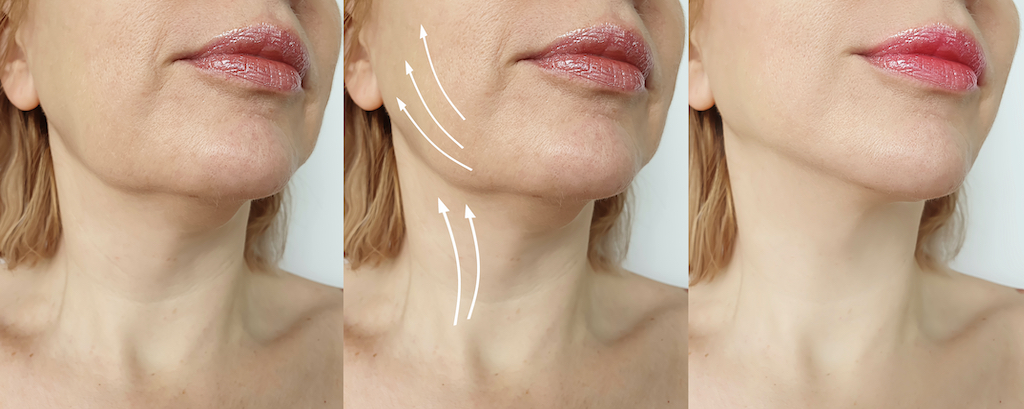Nationally renowned board-certified plastic surgeon, Dr. Rodríguez-Feliz serves local and international clients at his boutique aesthetic practice in Miami, FL. He has published numerous peer-reviewed articles in some of the industry’s top scientific journals, including Plastic and Reconstructive Surgery®, Annals of Plastic Surgery, Journal of Craniofacial Surgery, and Aesthetic Plastic Surgery. Dr. Rodríguez-Feliz and co-authors were honored with the 2015 Best U.S. Paper Award by Plastic and Reconstructive Surgery®, the premier and most prestigious plastic surgery journal in the world.
 Photo Credit: Shutterstock
Photo Credit: Shutterstock
HB: What is a verticle facelift?
A vertical facelift repositions droopy facial tissues in a vertical vector rather than lateral as older facelift techniques would do. This vertical repositioning results in a lift and improvement not only on the jowls and along the jawline area, but also on the midface (cheeks). Older facelift techniques aim to pull on the SMAS layer (deep facial tissues) in a lateral vector (towards the ear), one of the reasons we tend to see flattening of the cheeks with this technique. In addition, considering the pulling vector is less direct with older facelift techniques, more force is required to see an equivalent change in a particular area (e.g. jowls) putting the patient at risk of showing the dreaded “pulled-look” many still associate with facelifts.
HB: How does this facelift surgery work?
This modern facelift approach requires less skin elevation, reducing the risk of hematoma post-op. I perform this procedure in most patients under local and/or IV sedation. A mixture of lidocaine, epinephrine, and tranexamic acid is infiltrated under the skin for anesthesia and bleeding control. The incisions are hidden in the contour and creases of the ear. In patients with mild neck laxity, extending the incision behind the ear for 2 cm will address the issue without the need to carry along the incision towards the hairline. Those with more severe neck laxity or significant fat above the platysma, or enlarged submandibular glands, may require the incision behind the ear to be extended to the hairline and in some cases an additional 2-3cm incision under the chin.
The key aspect of this modern facelift technique is the elevation of a deep plane for mobilization of the SMAS layer and the skin as a whole unit, while releasing the ligaments from the facial bony structures to the soft tissues and skin, resulting in a better vertical mobilization of the facial tissues.
View this post on Instagram
HB: Who is a good candidate for this procedure?
The best candidates are patients with early signs of facial aging characterized mostly with mild jowls, midface laxity, and peri-oral skin laxity. Some patients with minimal excess skin in the submental region will also see an improvement in this area especially if the anterior incision is extended for about 2cm behind the ear. Those with more severe neck fullness and/or laxity may require extended incisions behind the ear and in some cases an additional one under the chin.
Now that facelift techniques have continue to evolve into less invasive procedures and more natural results, I see more and more patients in their early 40’s that favor a surgical approach that can give them long-term results rather than fighting facial laxity with short-term, expensive, and less effective treatments such as threads and fillers.
HB: What is recovery like?
The downtime for a vertical facelift is 7-10 days, similar to most facial aesthetic surgeries. Full recovery is expected between 6-8 weeks. A post-surgical compression garment is used for 1-week post-op. Oral supplements to reduce swelling and inflammation such as arnica, bromelain, and quercetin are continued for 1-week post-op. Sutures are removed at 1- week post-op. An advanced scar cream with silicone and sunblock is used starting 1-week post-op and continued for 3 months. The incisions may look slightly red for a few weeks after the surgery, but after 8-12 weeks they are almost imperceptible. Low impact, low-intensity activity (e.g. walking) can be resume after 1 week.
I have been extremely happy with the results achieved with this modern facelift technique over the past few years. Patients look very natural as there is no pulling on the actual skin. All the pulling forces are applied on the deep plane which repositions droopy deep facial tissues without pulling on the skin. Also, I have been able to achieve better midface volume without needing to fat graft the area. Although there are no permanent results in plastic surgery, this procedure will give patients results to enjoy for many years after the procedure.
For more information, visit Dr. Brian A. Levine's social media:

























